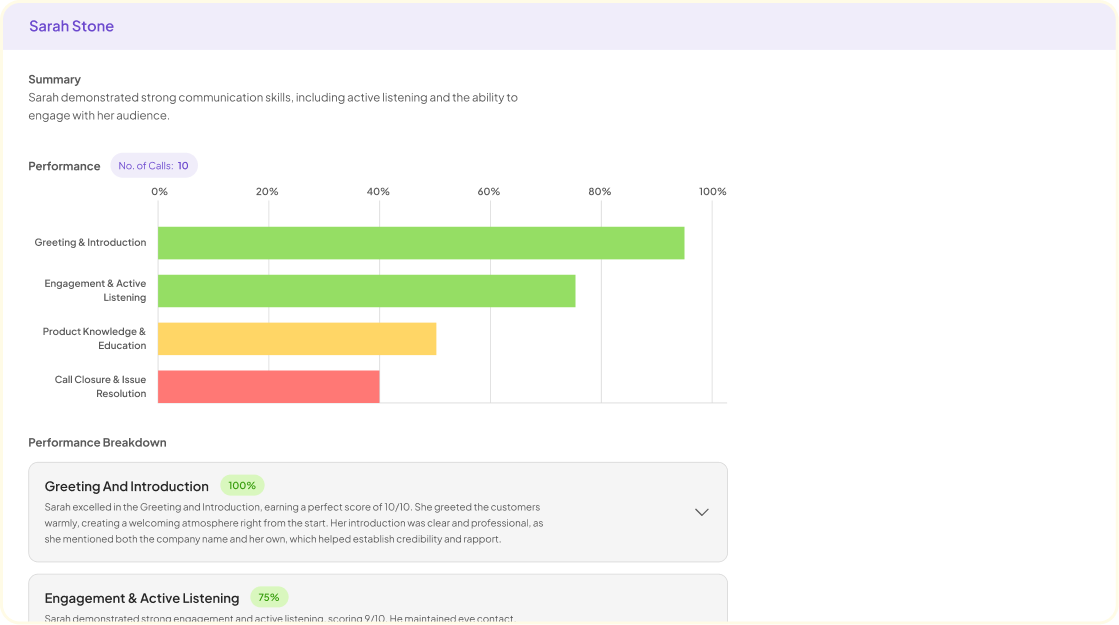The rise of Speech Transcription Automation is reshaping how businesses handle audio content. Imagine a world where conversations, meetings, and interviews are quickly transformed into text, freeing valuable time and resources. This technology is not just a trend; it's a necessity for organizations aiming to streamline their workflows and enhance productivity.
By adopting Speech Transcription Automation, businesses can effortlessly convert audio into written reports. This allows teams to focus on analysis and decision-making instead of manual transcription. As this automation becomes more accessible, even those without technical expertise can participate, democratizing access to crucial insights and fostering collaboration across various sectors.
Benefits of Utilizing Audio to Transcript AI
Speech transcription automation offers numerous benefits that can enhance productivity and efficiency in various fields. First, it significantly reduces the time and effort required to convert spoken words into written text. This means professionals can focus more on their core tasks instead of spending hours transcribing recordings. Additionally, the accuracy of transcription software continues to improve, ensuring that written texts are clear and coherent, minimizing costly errors that can arise from manual transcription.
Moreover, the ability to easily organize and access transcribed content fosters better collaboration among team members. With transcripts readily available, teams can share insights and ideas more effectively, leading to improved decision-making processes. Furthermore, having a written record of conversations allows for easier reference to past discussions, which enhances accountability and transparency. Overall, these advantages demonstrate the value of integrating audio to transcript AI into daily operations to streamline workflows and enhance communication.
Efficiency and Speed of Speech Transcription Automation
Speech transcription automation significantly enhances productivity by converting spoken content into written form with remarkable speed. Traditional manual transcription methods can be labor-intensive and time-consuming. In contrast, automated systems can process audio files rapidly, turning hours of recordings into texts within minutes. This efficiency allows businesses to focus on analysis and decision-making rather than the tedious task of transcription.
Moreover, the accuracy of these automated systems has improved dramatically due to advances in artificial intelligence and machine learning. These tools efficiently handle various audio qualities and accents, ensuring reliable transcripts. When organizations adopt speech transcription automation, they can streamline workflows, make informed decisions promptly, and improve overall collaboration. Embracing this technology not only saves time but also allows teams to tap into insights more quickly, enabling better responses to customer needs or market trends.
Cost-Effectiveness in Transforming Audio to Text
Transforming audio to text through speech transcription automation can prove to be a cost-effective solution for businesses of various sizes. By utilizing automated services, organizations can significantly reduce expenses related to manual transcription, which often requires substantial human resources. This automation streamlines workflow, allowing teams to focus on analyzing insights rather than spending hours transcribing audio files.
Additionally, the accuracy of these automated tools has improved remarkably, minimizing errors that can arise from manual processes. This leads to better quality transcripts, enhancing decision-making and facilitating communication. With a variety of platforms available, businesses can choose one that fits their budget and specific needs. Ultimately, the integration of speech transcription automation not only saves time but also promotes efficiency and boosts productivity across different departments.
Key Strategies for Effective Speech Transcription Automation
Effective Speech Transcription Automation relies on several strategies that enhance accuracy and efficiency. First, selecting the right technology is crucial. Consider different AI tools designed specifically for transcription tasks, as they offer varying features and capabilities. Each tool can cater to different needs, so evaluate them based on user reviews and functionality.
Next, ensure you have high-quality audio recordings. Background noise and unclear speech can significantly affect transcription quality. Employing good practice in recording can enhance clarity and detail. Third, regular updates and training for the AI software will improve transcription accuracy over time. Continuous improvement should be a part of any automated transcription solution.
Incorporating feedback loops where users can correct errors helps refine the system further. Finally, provide context to the AI by categorizing audios according to their type or topics to facilitate better understanding during transcription. Emphasizing these strategies will lead to more reliable outcomes through automated processes.
Choosing the Right Audio to Transcript AI Tools
Choosing the right audio to transcript AI tools can significantly enhance your transcription experience. When considering these tools, it's crucial to assess their accuracy, speed, and cost. A good tool should accurately capture speech nuances, ensuring that the transcripts reflect the original audio's tone and intent. Additionally, speed is important; fast tools can save time for busy professionals needing quick turnaround times for their transcription projects.
For optimal results, consider tools with user-friendly interfaces, which make it easy to upload audio files and access transcripts. Some tools offer advanced features, such as speaker identification and the ability to handle multiple languages, which can be beneficial for diverse content. Ultimately, the right choice will depend on your specific needs, whether they be for research, content creation, or business purposes. Exploring various software options will help you find the best fit for your transcription automation needs.
Best Practices for Optimizing Transcription Accuracy
To optimize transcription accuracy, begin by ensuring the audio quality is excellent. Use high-quality microphones and minimize background noise, as clear audio significantly enhances the performance of transcription automation tools. Additionally, speak slowly and enunciate words to improve clarity. It is also beneficial to use a consistent format when delivering your audio content, as structure aids in comprehension.
Next, consider the speaker’s familiarity with the topic. Providing context or an outline for important discussions can help transcription software recognize key terms more effectively. Regularly reviewing and training the AI tool on specific jargon relevant to your industry will also yield better results. Finally, utilize the editing features available in many transcription applications to correct any errors and fine-tune the final output. These best practices can enhance the overall efficiency of speech transcription automation, ensuring accurate and reliable transcripts.
Conclusion: Embracing Speech Transcription Automation for Success
Embracing Speech Transcription Automation opens exciting pathways for businesses striving for efficiency. By automating the transcription process, teams can save valuable time and focus on high-priority tasks. This shift not only enhances productivity but also democratizes access to critical insights across the organization, allowing anyone to engage without requiring extensive training.
As organizations adopt Speech Transcription Automation, the benefits become increasingly apparent. The capacity to easily convert conversations and meetings into readable text transforms vast amounts of audio into actionable information. Embracing this technology is essential for success in today’s fast-paced environment, ensuring that every voice is heard and valued in decision-making processes.


